Shot in black and white, David Fincher’s Mank transports audiences through the sights and scenery of Golden Age Hollywood and 1930s and 40s California. With the help of soundstages, matte paintings, and a lot of research, the team behind Mank’s locations communicates the glamour and history of an epic era of moviemaking. Queue explores some favorites.
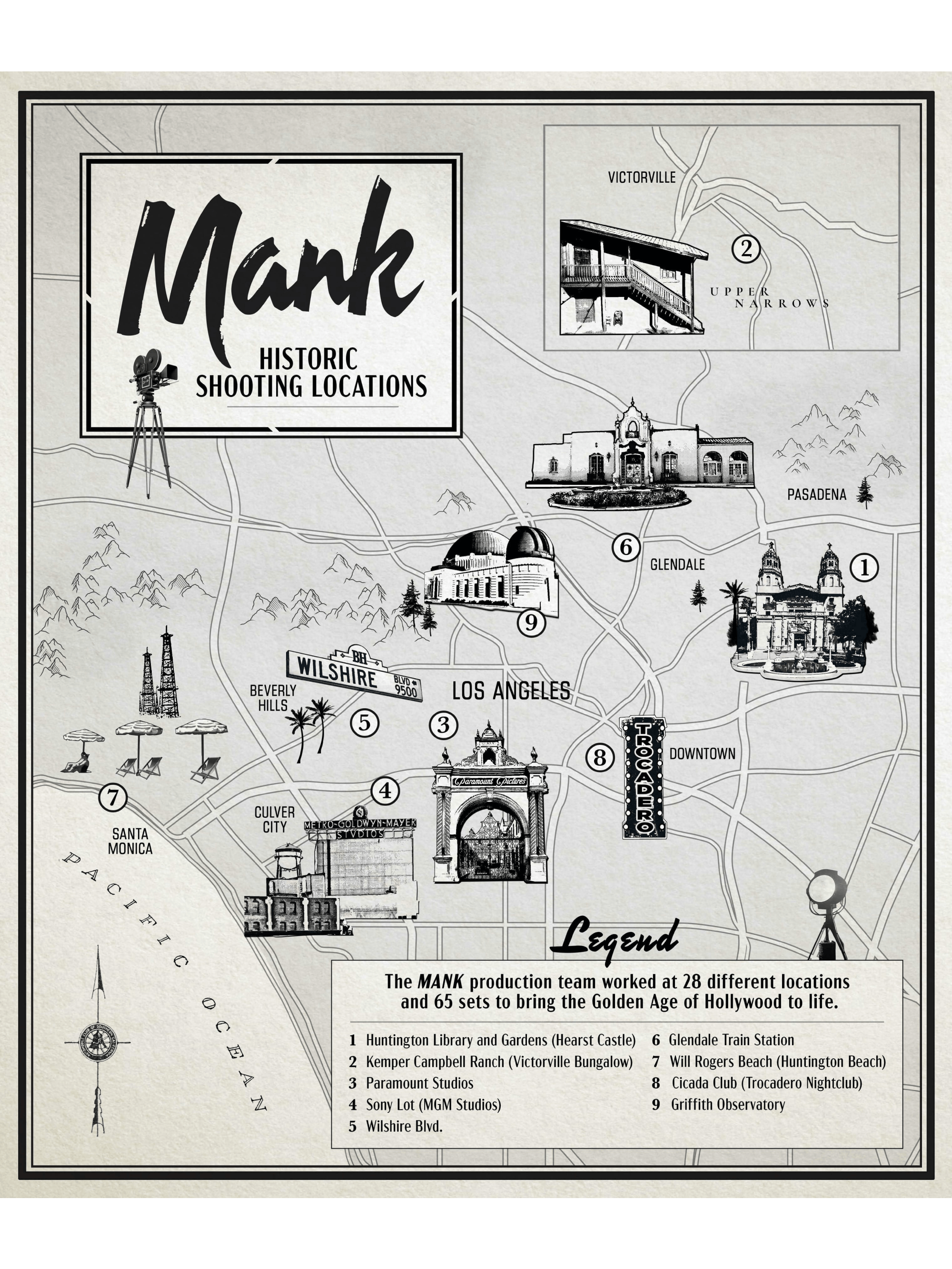
Although it served as a location for Stanley Kubrick’s Spartacus and Lady Gaga’s music video for “G.U.Y.,” Hearst Castle is no longer available for shooting and is instead open only as a museum. However, with the help of production design, visual effects, multiple shooting locations, and a lot of research, the filmmakers recreated the extravagant estate’s most indulgent and unique details. From the personal zoo, to the intricate ceilings, to the art imported from around the world, Hearst Castle comes alive in Mank.
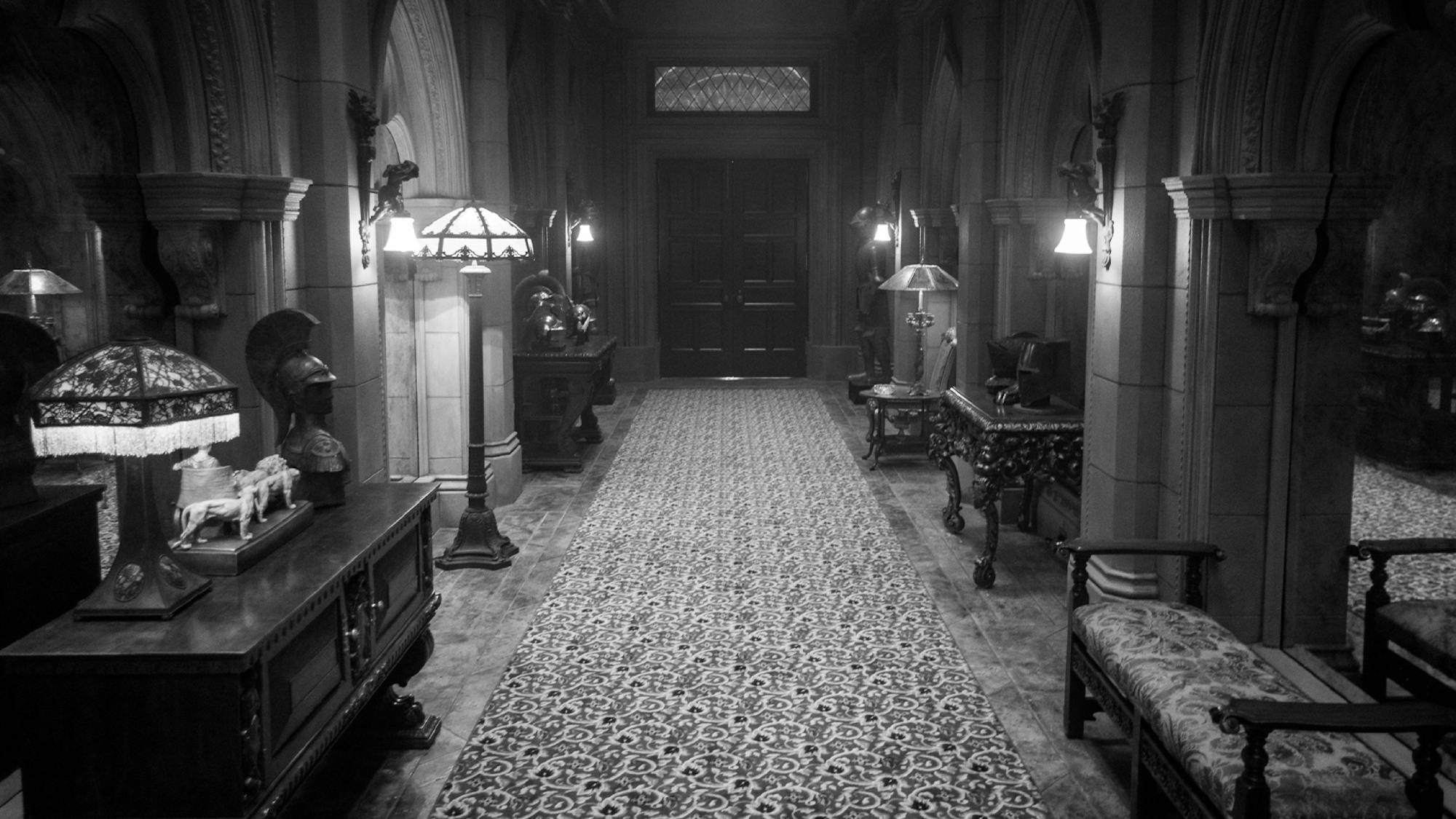
While the vistas were purged of modern structures via visual effects and the interior was built on a soundstage, the shots of the Victorville hideaway’s exterior were authentic. Orson Welles rented this house to keep Herman J. Mankiewicz sober while he recovered from a broken leg and wrote the first draft of what would become Citizen Kane.
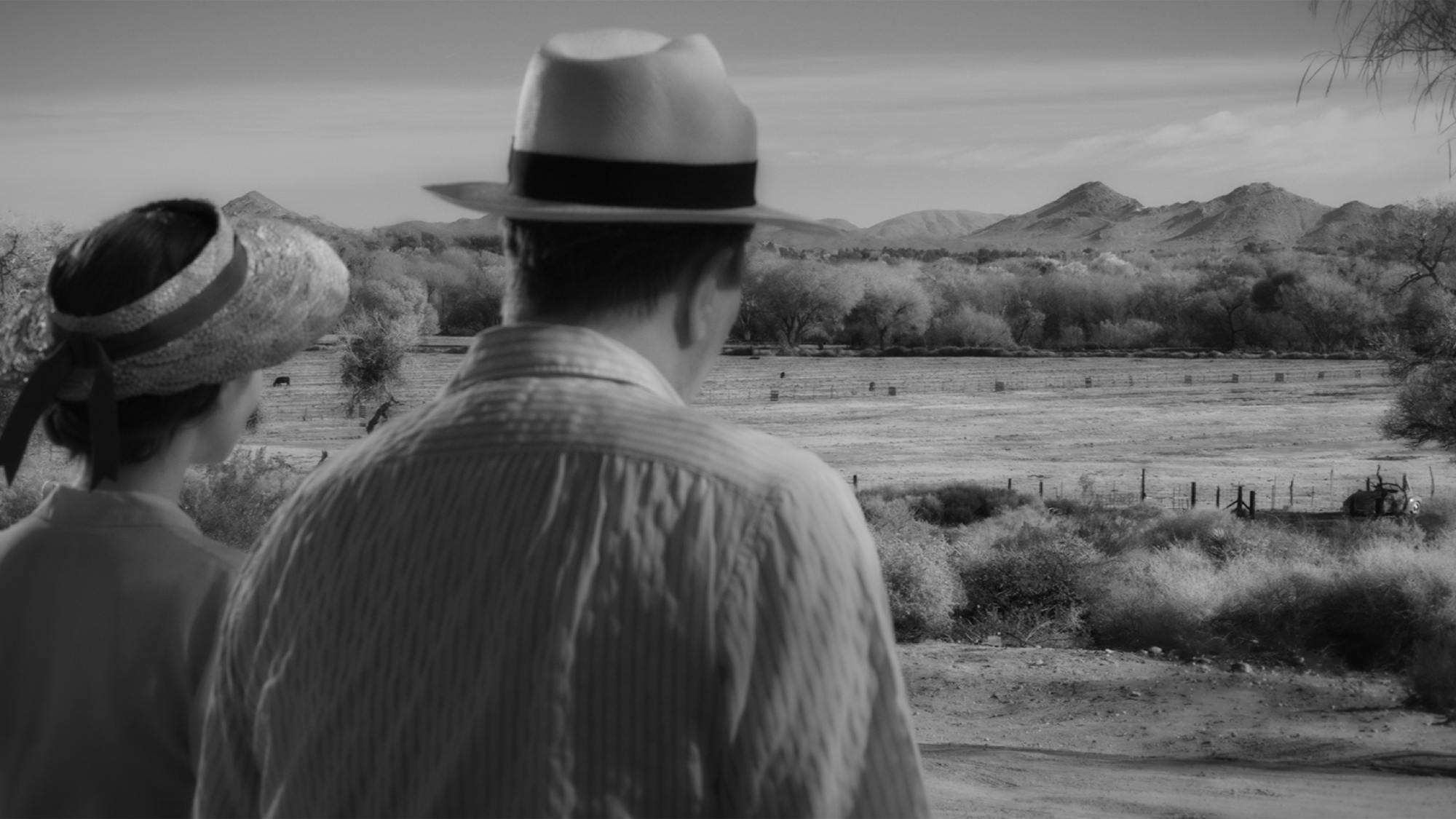
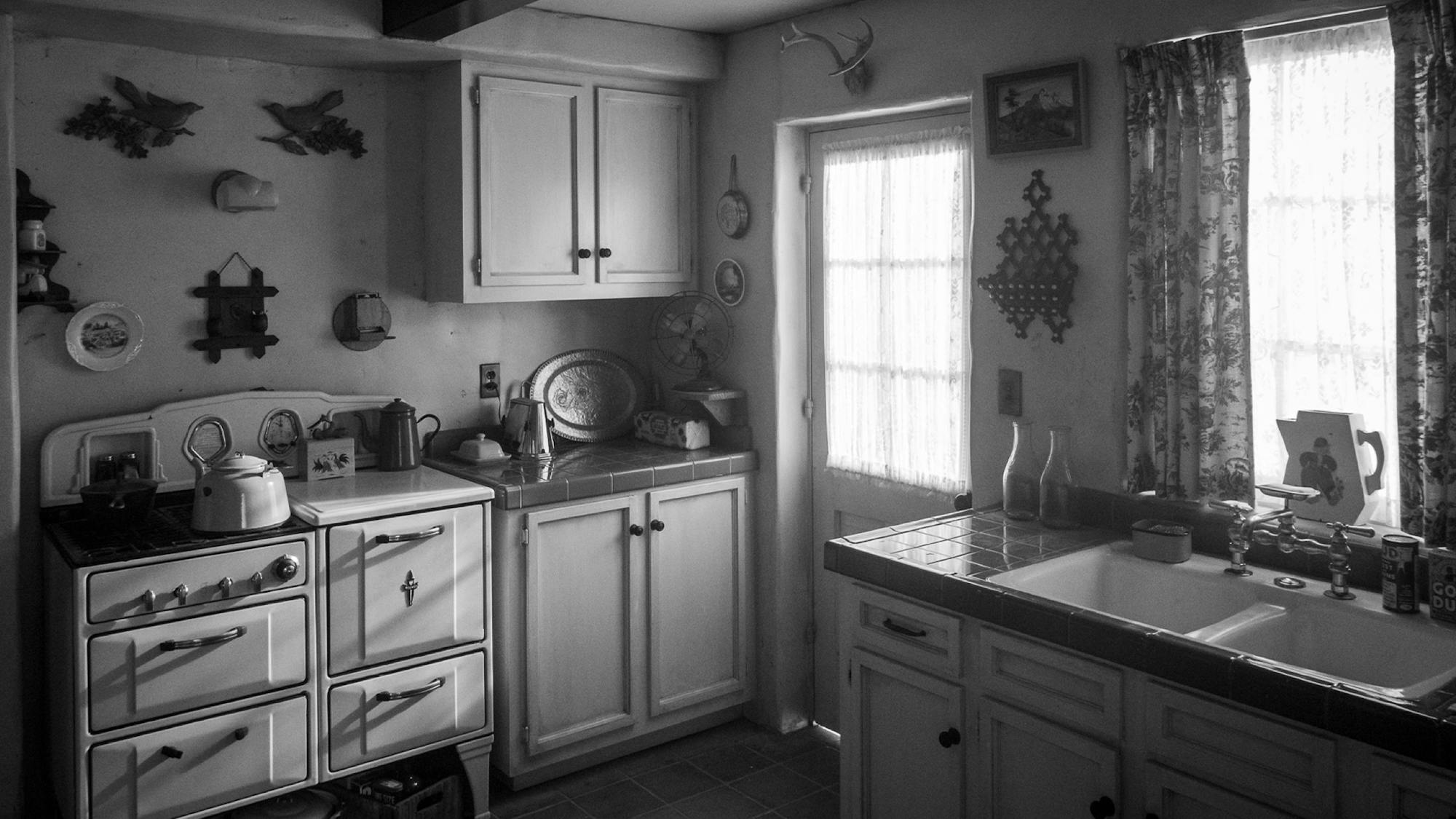
The 100-year-old location needed some work to bring it back to the 1930s, but production designer Donald Graham Burt and his team managed to turn conference rooms and a hospital compound into writers’ rooms and steno pools. The attention to detail extended to every corner — even to the distinctive tiles in the men’s bathroom, which, although the film was shot in black and white, inspired the production team to look at 40 different tones of green as they recreated the space.
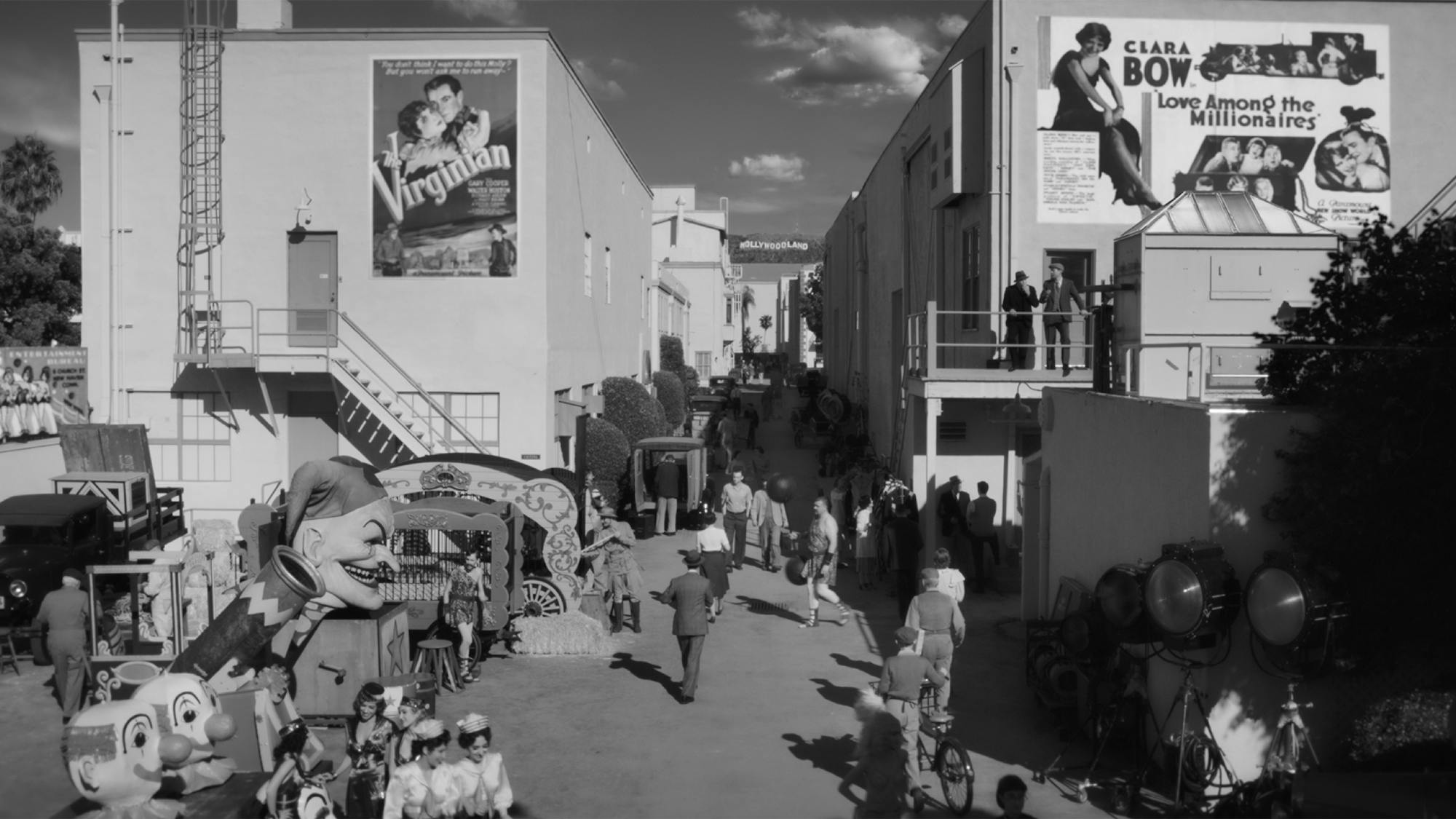
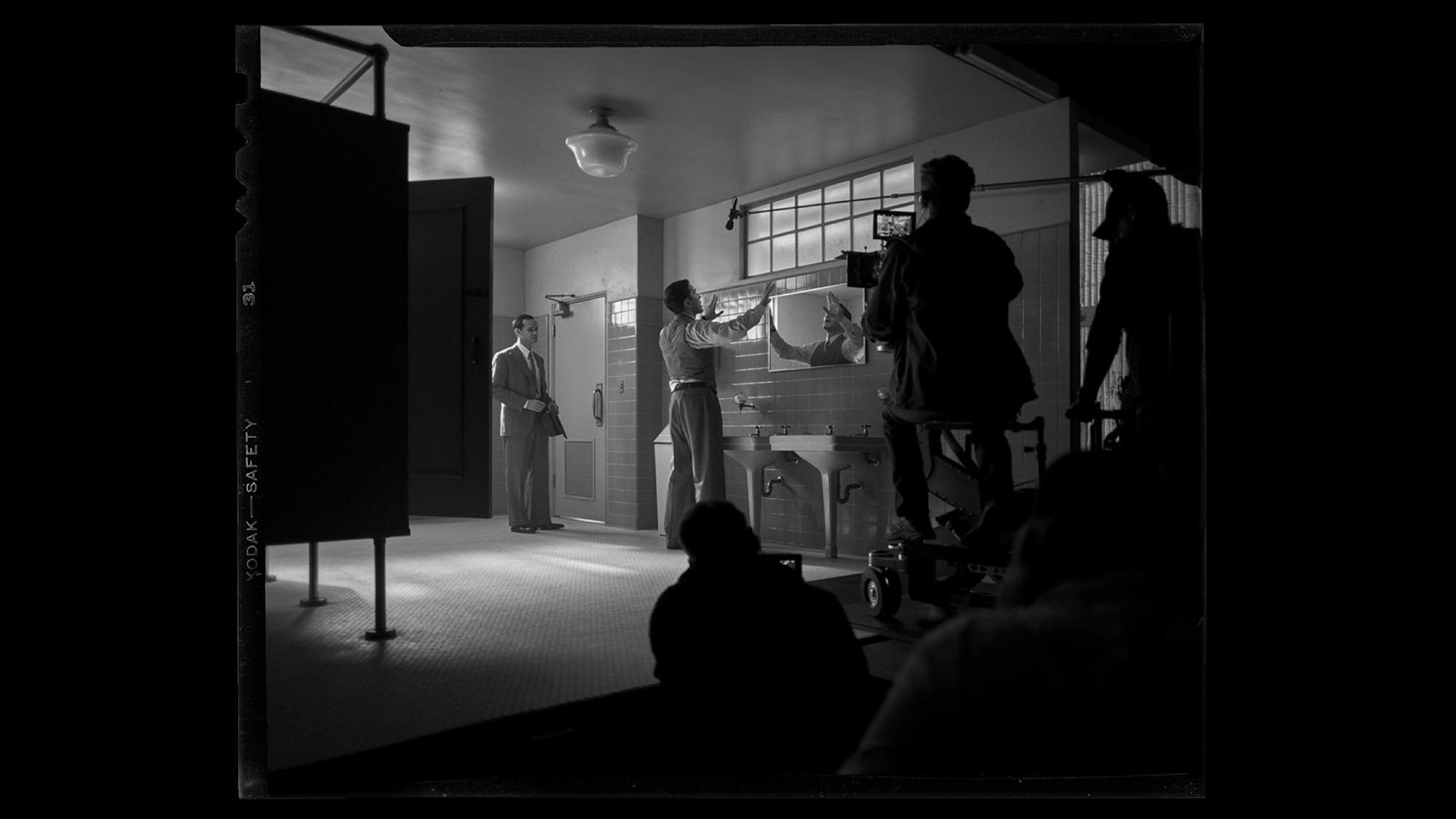
Because M-G-M changed locations, the scenes there were actually shot at Sony Complex, the original site of M-G-M Studios when it opened in 1924. The production team embraced a noir look in some of these scenes, and particularly with Irving Thalberg’s office, leaning on Venetian blinds, shafts of light, and faces shrouded in shadow.
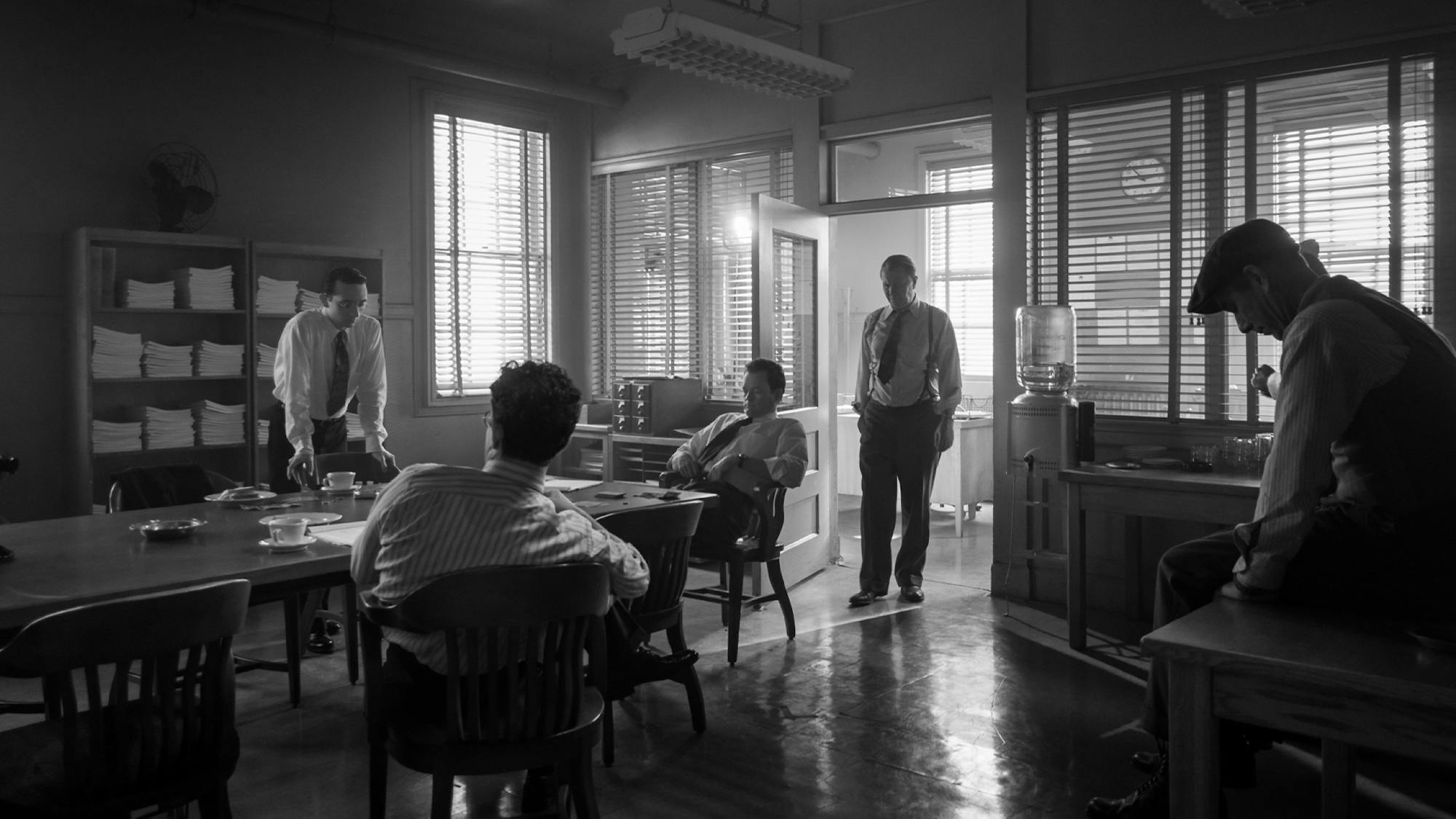
As Mank and Sarah drive to the beach in this flashback, we get a glimpse of Wilshire Boulevard. The scene is entirely accurate — and entirely digital. The resemblance is achieved through the details, such as shrubbery common at that time (eucalyptus) and the unmistakable giant coffee pot atop the roof of Ben-Hur Delicious Drip coffee shop. Artists scouted both on the ground in L.A. and via Google maps to identify shops, gas stations, and cinemas from archival footage, along which they drove a virtual camera car.
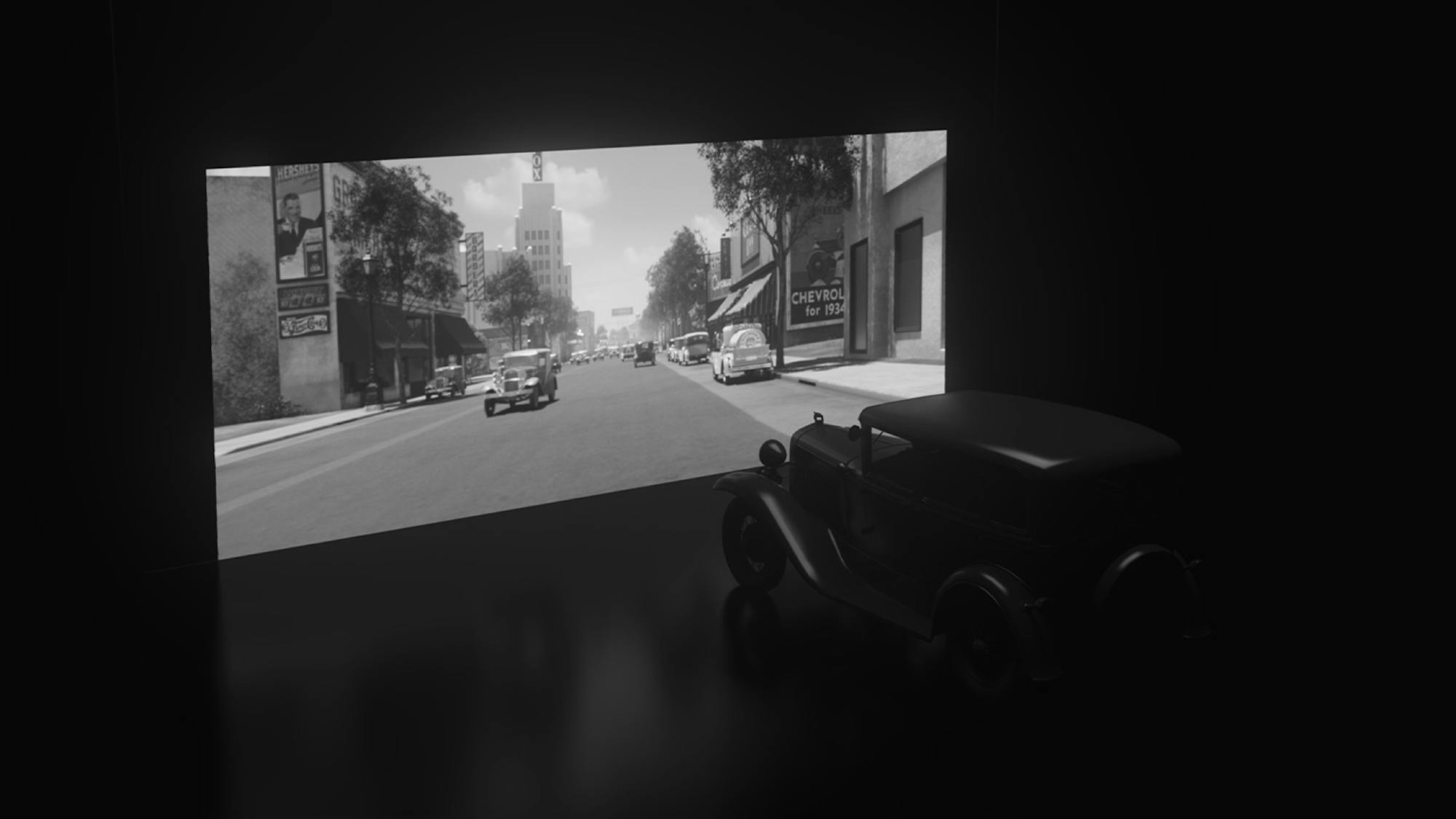
Glendale Station serves as the characters’ departure point for travel to San Simeon in this scene, created with the old-school practice of matte painting, which used realistic fabricated backdrops for outdoor scenes. In this case, of course, the paintings were done digitally.
Huntington Beach also used the matte painting technique. Visual effects supervisor Wei Zheng found inspiration for this scene in an art department research photo taken in the 1930s of oil derricks built all around the city’s beaches.
While the Trocedaro no longer exists, production relied on subtle details to bring the era’s club scenes to life. For example, although the neon sign was imagined with C.G.I., the way the bulbs blink reflects the instability of power in the 1930s.
Since it opened in 1935, Griffith Observatory has been an iconic landmark in American cinema, featured in movies such as Rebel Without a Cause and La La Land. It would have been partially built in the 1930s, and its cameo in Mank was created using matte painting.